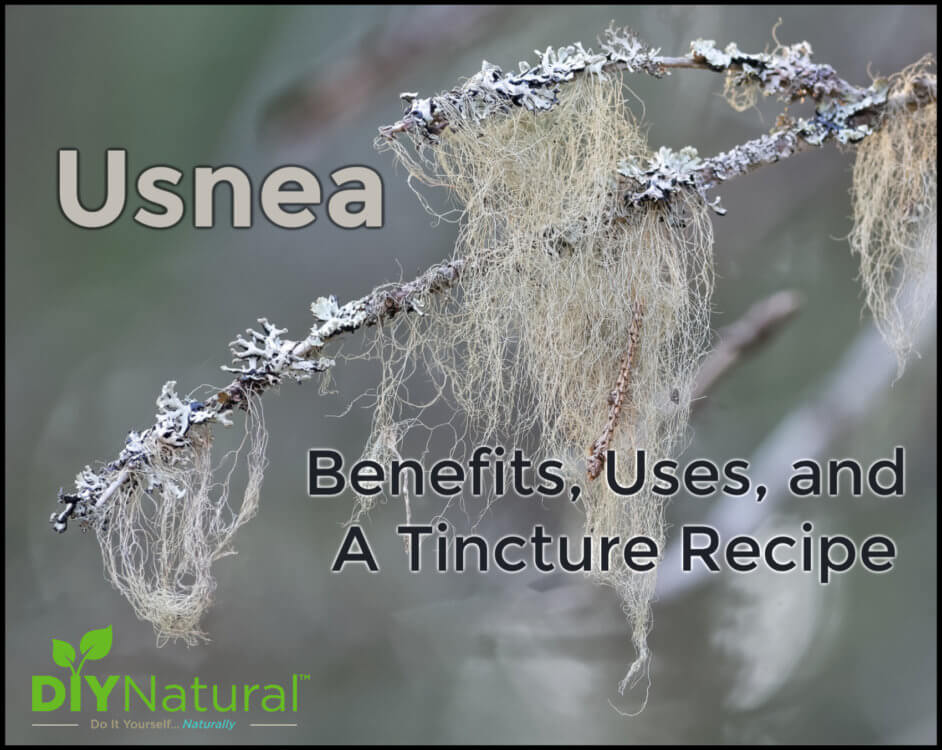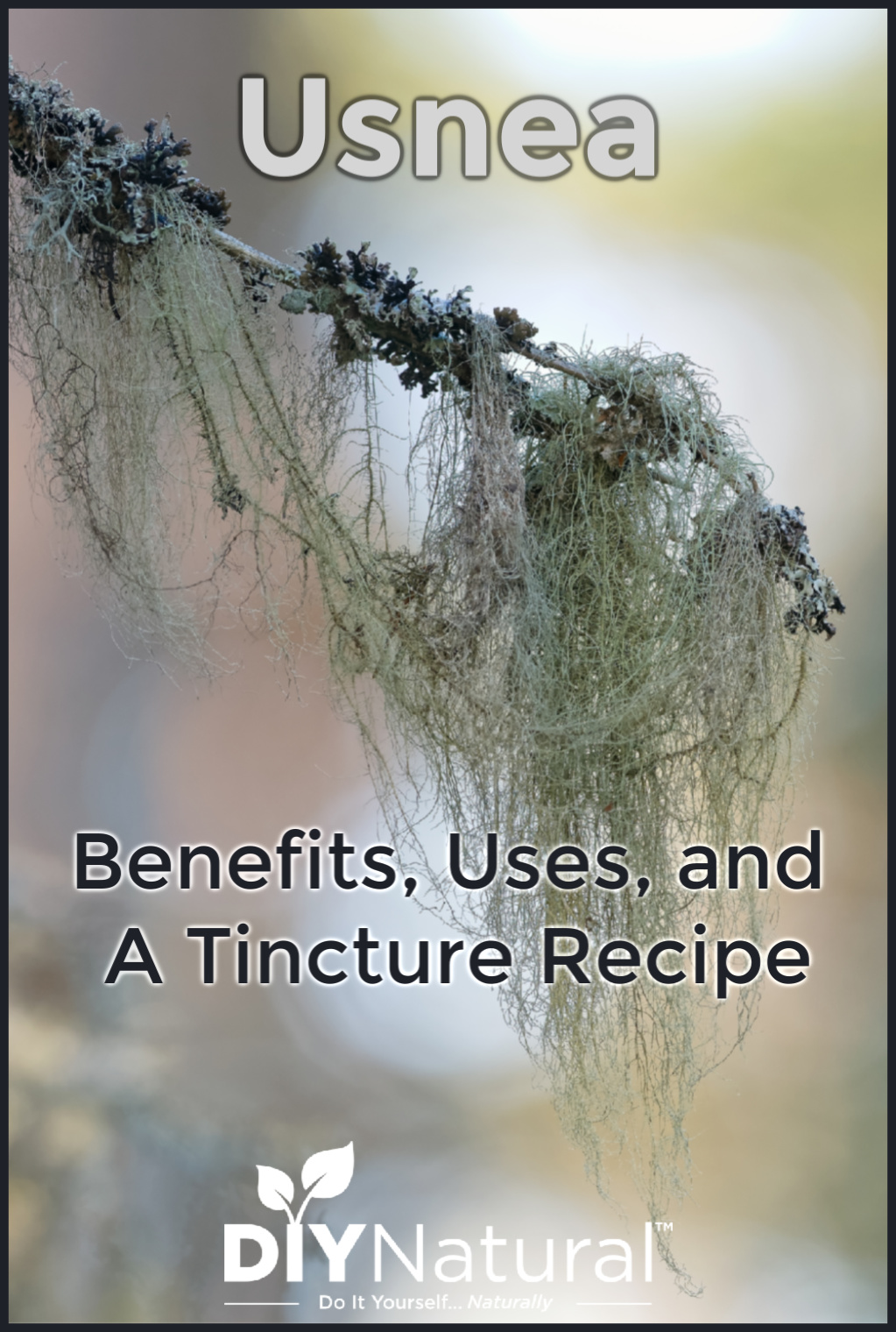
Usnea is a lichen that has many benefits when used properly. Let’s take a closer look and discover a usnea tincture recipe to harness its beneficial uses.
When I first started my herbal journey, some things were familiar. Clover, plantain, echinacea: all of these I knew of. But some, like usnea, I had a hard time grasping the idea of. What is it? And why would I want to?
What is Usnea?
People also refer to usnea as “Old Man’s Beard.” For starters, it is a lichen you can find in many parts of the world. It favors damp woods, often growing on dead or dying trees. Usnea is not a parasite, like mistletoe can be, but is a lichen. Lichens are a symbiosis of alga and fungus, producing its own food via the chlorophyll in the alga. You can usually find it in dappled or mixed sunlight as the alga needs sunlight to produce food. The trees it chooses to live on are merely a place for the roots to grab a hold of.
In appearance, usnea looks like a frilly or fuzzy branched weed growing on a tree. It is grayish-green, looking much like the Spanish Moss in the southern parts of the US. If you aren’t sure that you have the right thing, pull on a branch. If it is usnea, it will stretch before breaking. The inner cord of usnea is very elastic. I’ve seen it growing on pines and firs, but also on maples and oaks. It doesn’t seem to be too particular as to what the host plant is.
In some areas, people use usnea as bioindicator. It is sensitive to pollution and can’t survive with bad air. It will only grow in clean air, mainly in wooded areas.
Benefits of Usnea
Other than using usnea as a decoration in my fairy gardens, it is a useful herb to have around. You can use it as a dye plant for dying fabric, creating shades of green, brown, yellow and even blue and purple depending on the mordant and fabric you use. Check out this article if you want to know more about fabric dying.
Herbally, usnea has been used to combat a number of respiratory diseases such as streptococcus and staphylococcus and it may help in certain cases of pneumonia. It is also being used in clinical trials in fighting urinary tract infections.
According to Paul Bergner, Author of Medical Herbalism. “The usnic acid in Usnea is effective against gram-positive bacteria such as Streptococcus and Staphylococcus, making it a valuable addition to herbal formulas for sore throats and skin infections. It is also effective against a bacterium that commonly causes pneumonia.[1]
Usnea is also showing promise as an antifungal and antimicrobial. Studies are being done on this right now to see how effective it is. It may also help as a deodorant.
Usnea Tincture
For home use, usnea is best used as a tincture. Making a tincture is very easy using the folk method, where exact amounts are not necessary.
- Quart jar with lid
- Usnea, fresh or dried, about 2 cups
- Alcohol, such as 40% vodka
- Time!
Place the usnea in the jar and cover with alcohol. You don’t need to fill the jar, just be sure the usnea is covered. Place the lid on top, making sure it is on very tight. Shake the jar. Leave it in the sunlight for 6 weeks or more, shaking daily if possible. If the usnea is dried, you may need to add more alcohol as it soaks up some moisture. Check it in a few days.
When the tincture is finished, and the longer you leave it in the jar, the better, strain the liquid and decant into dark-colored dropper bottles. Keep the tincture in a dark, cool place. This has a shelf life of about a year.
Using Your Tincture
To use the tincture, take a dropper full every four hours at the onset of a cough or cold. It seems to be very effective for some coughs. If you don’t like the taste, add it to your juice or coffee. Or add some honey or molasses.
Usnea doesn’t seem to work well as a preventative, unlike immune boosters like echinacea. It seems to work better at helping the respiratory system to kick illnesses out of your system. You can also make tea from it, but it’s not very palatable and extracts better in alcohol than water.
Usnea has no known side effects but may be harmful in large doses. Don’t use excessively or over long periods of time.
You can also dry and/or powder usnea for use as a poultice or wound compress.
Have you tried usnea? Tell us your thoughts!
Sources
- Rogers, R. D. (2011). The fungal pharmacy: the complete guide to medicinal mushrooms and lichens of North America. Berkeley, CA: North Atlantic Books.
- Jessica Godino. Usnea: Immune-Enhancing Lichen.



